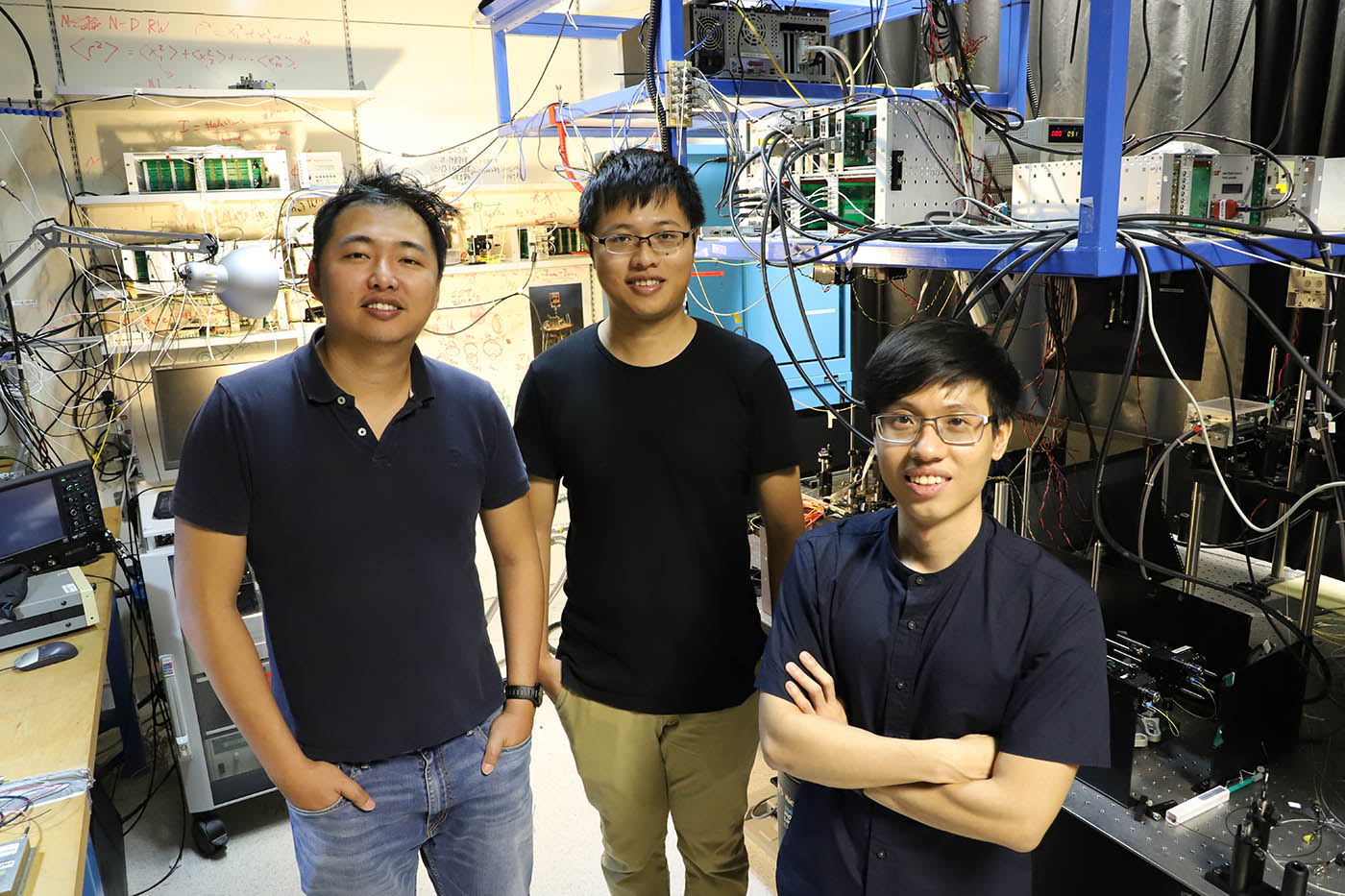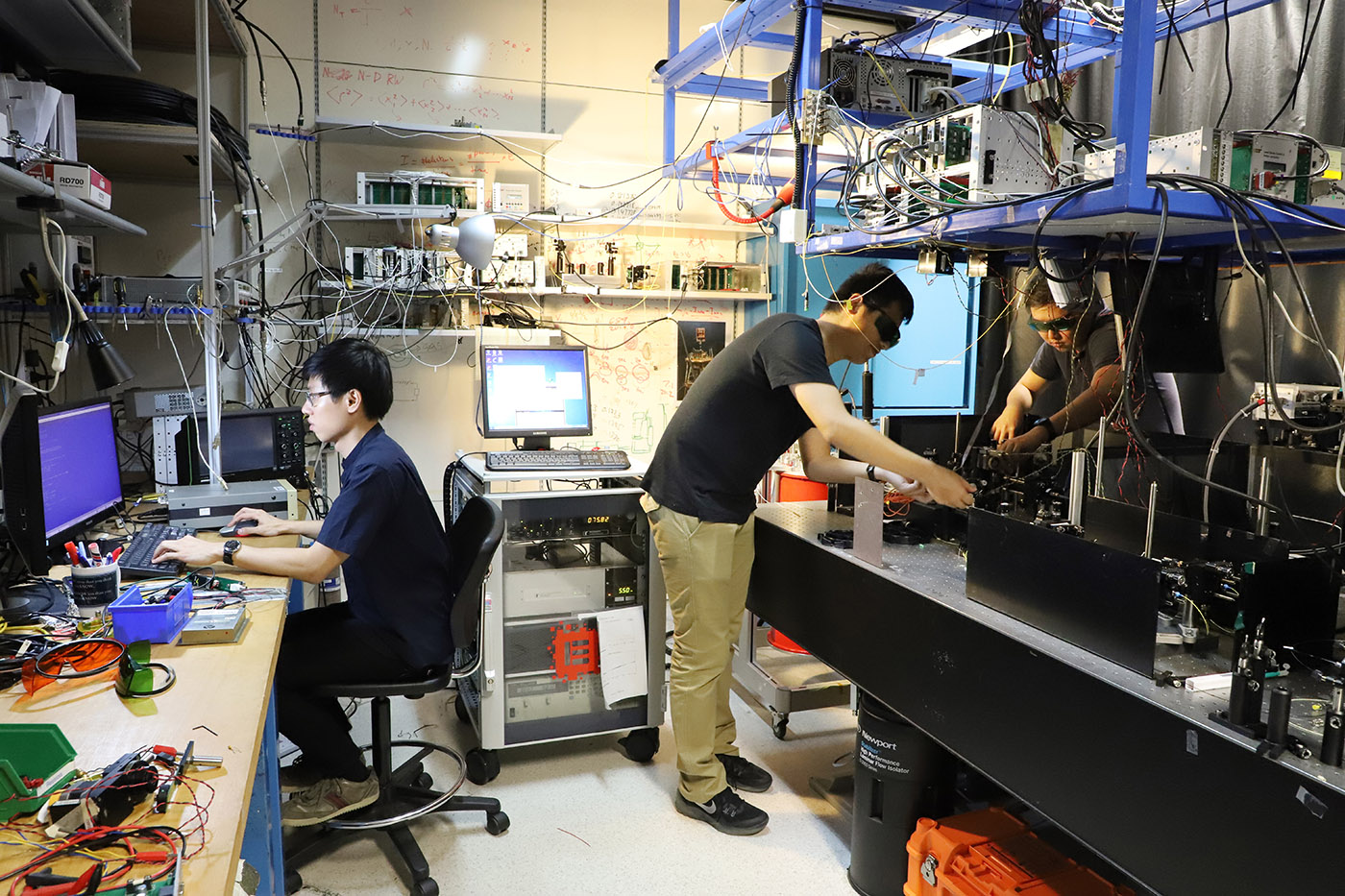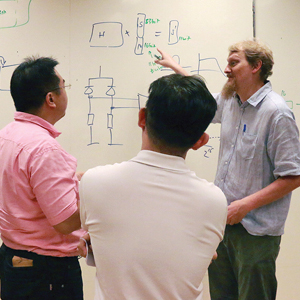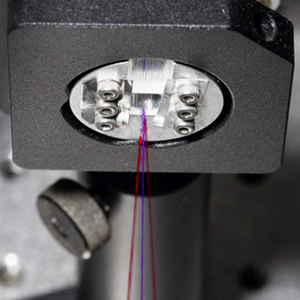Highlights
Probably the planet's fastest source of certified random numbers
 CQT’s Jianwei Lee, Lijiong Shen and Le Phuc Thinh (pictured from left to right) are part of a team extracting randomness from nature.
CQT’s Jianwei Lee, Lijiong Shen and Le Phuc Thinh (pictured from left to right) are part of a team extracting randomness from nature.
CQT researchers and their collaborators have set a record for the fastest production of ‘certified’ random numbers.
The work is described in a paper published 9 October in Physical Review Letters. "To the best of our knowledge, we have currently the fastest source of certified random numbers on the planet," says Christian Kurtsiefer, Principal Investigator at CQT, who led construction of the experiment. The collaboration includes researchers from the US National Institute of Standards and Technology (NIST) in Colorado, the University of Texas at Austin, United States, and the University of Basel in Switzerland.
By measuring pairs of light particles using extremely sensitive detectors, the team created around 240 random bits per second. The rate has been creeping up in experiments performed around the world for different levels of certification, with a team in China reporting just weeks earlier in Nature a rate of 181 bits/s.
The researchers estimate that their approach could reach an upper limit of 1300 random bits/s while keeping the same stringent security guarantees.“We used a very paranoid extractor of randomness,” says Valerio Scarani, the CQT Principal Investigator who led work on the theory side.
Why we need randomness
Having truly random numbers is important for cybersecurity applications, simulations and in gaming. Software methods can generate ‘pseudo-random’ numbers, but subtle patterns in their output can lead to failures or security holes that can be exploited. There’s also a problem of ensuring the randomness in security applications is ‘private’ – that no one else has a copy.
Quantum physics offers solutions to both problems. The behaviour of two particles that share the quantum property of entanglement is unpredictable but correlated. A pattern of measurements known as a ‘Bell test’ can confirm the presence of entanglement, in turn guaranteeing that the measurement outcomes are both random and private. The Bell test effectively certifies the output.
Albert Einstein was famously concerned by this idea, saying “God does not play dice with the universe.” However, experiments have confirmed that randomness is there, with teams in recent years closing loopholes in such measurements.
CQT experimentalists Lijiong Shen, Jianwei Lee and Alessandro Cere built a setup that makes entangled light particles by shining a UV laser onto a particular crystal. This ‘continuous pumping’ of the crystal creates pairs of infrared photons entangled in their polarisation.
The photons are sent to a pair of photon detectors, which record when light particles of different polarisations arrive. The Bell test is applied to these bits.
To close a ‘detection loophole’ in the setup that could give adversaries a way to hack the output, the team had to capture as many photon pairs as possible. The CQT researchers used extremely sensitive photon detectors supplied by their NIST collaborators. They also simplified the design to minimise losses of light, achieving an 82% efficiency overall. “We care about every single percent,” said Lijiong.
An innovative Bell test
The researchers invented a new method of analysing the data to test for entanglement, looking at their detector outputs in chunks of time, rather than trying to identify pairs in the data. It follows the idea of making a scheme ‘device-independent’, such that you can trust the device's operation without understanding all the inner workings. The team expect this innovative scheme for applying a Bell test to be widely adopted.
Once entanglement is confirmed, the bits are further processed to give the random output. From a total of 175,288,156 bits collected over 43 minutes, 617,290 certified random bits were extracted. The team confirmed that these bits passed the tests established by NIST for testing random number generators.
The device itself is unlikely to be widely adopted for random number generation just yet, however. The photon detectors it requires run at temperatures just milliKelvin above absolute zero, so operate in a specialised and bulky fridge. “With currently available photon detectors it’s not a practical system, but it’s quite conceivable that could change in the future if somebody comes along with a new photon detector,” says Christian.
For practical solutions, the team has developed a quantum random number generator that creates almost 500 million bits per second in a pocket-sized device that operates at room temperature. The difference is that it does not perform a Bell test, so the random numbers fall short of being certified.
 In Christian Kurtsiefer’s laboratory at CQT, researchers have developed different quantum random number generators. Making certified random numbers currently requires bulky equipment, but they have also designed smaller, practical devices to make random numbers with fewer security guarantees.
In Christian Kurtsiefer’s laboratory at CQT, researchers have developed different quantum random number generators. Making certified random numbers currently requires bulky equipment, but they have also designed smaller, practical devices to make random numbers with fewer security guarantees.
Learn more
Related Stories
 | Practical quantum technologies: a workshop for industry March 15 2016 |
 | Experiment records extreme quantum weirdness November 09 2015 |






